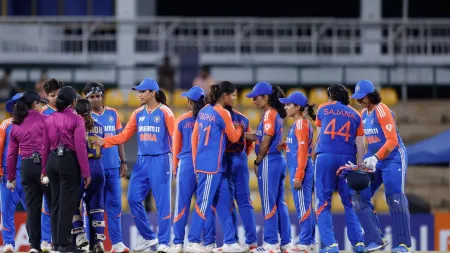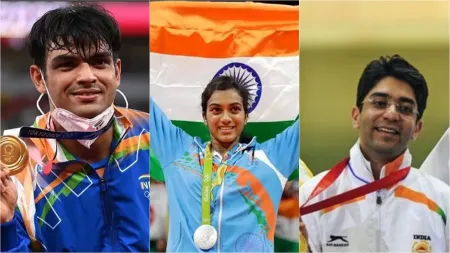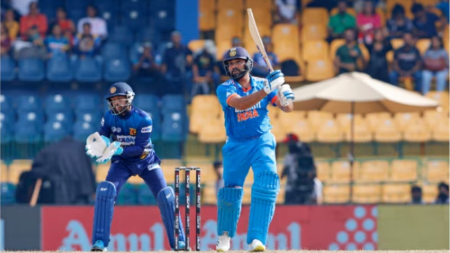Olympics: He once won a medal with Abhinav Bindra, now Sameer Ambekar is a gunsmith for India’s top shooters
In 2002, Sameer Ambekar teamed up with a young shooter by the name of Abhinav Bindra. Together they won the 10m Air rifle pairs gold medal at the Manchester Commonwealth Games. While many from that illustrious batch of shooters went on to become national coaches (Suma Shirur, Samresh Jung and Jaspal Rana) and continue to train the latest generation of Indian shooters, Ambekar, like Bindra, chose to go a different path. He is an armourer for the National Rifle Association of India. His job – to ensure that the best Indian shooters do not face any gun malfunctions or troubles ahead of the Paris Olympics.
In a sport such as shooting, a well-tuned weapon and a shooter adjusted to that weapon, are the primary ingredients to success. The sport continues to touch higher scores routinely and gunsmiths and their settings on a rifle can change the course of an athlete’s career. A shooter’s jacket settings, the distribution of weight on their rifles, the barrel that they use and the pellets – obsession to the last detail is consistently being rewarded at the sport’s highest echelons. Ambekar attempts to bridge that gap between gun and gunslinger.

“By focusing on repairing, I wanted to be someone who Indian shooters could trust to work on their guns in India itself, rather than go outside the country,” says Ambekar. “If there are issues in a rifle, or some changes to be made, then after consultation with the players and the coach, I make those changes. Sometimes coaches feel their shooter needs a specific weight distribution, or a different part and that modification is carried out by me. Weapon testing, ammunition testing, is all done by me,” says Ambekar.
When many of India’s best shooters transitioned to coaching, his interests lay elsewhere. In 2003, after his success at the Commonwealth Games, the then-Indian shooter bought a new rifle. But with a new weapon came new struggles. He wasn’t able to tune the rifle how he wanted and the performances started to plummet. Then one day, he picked up his old rifle and his new one, went to the range and tried to see what was going wrong. The problem lay in the weight distribution of the new rifle. At that moment, making a comeback may not have materialised, but what life could be after shooting emerged.
In 2011, Gagan Narang, who would win a 10 metre air rifle bronze at the London Olympics a year later, asked Ambekar to join Guns for Glory and in doing so, sent him to learn the craft at gun manufacturers Walther in Germany. There he learned not just what parts are best for which rifles, but also an ability to fix or repair guns that didn’t have the necessary parts available in India – a necessity considering Indian athletes will never have access to Europe like a European.
Modifying and customising rifles
Now Ambekar works with some of India’s top shooters. He has regularly worked with 10m air rifle hopefuls Elavenil Valarivan and Ramita Jindal’s weapons over the last 7-8 years. Part of his job also lies in modifying and customising rifles. There was a point where Elavenil’s rifle got damaged in transit before an event. Ambekar says that while they weren’t able to get the rifle back in top condition because of a lack of parts, he was able to get it working because of some on-the-spot customisations.
One of the people Ambekar recently worked with was Sandeep Singh. The Armyman pipped World Championship gold medallist Rudrankksh Patil at the Paris Olympic Trials in New Delhi and Bhopal. Part of his uptick in performance was a visit to Germany earlier in the year.
“Before the trials, he went to Walther in Germany. There his weapon had been upgraded with a newer version of an absorber. I had told him that if the company wants to make changes to the gun, then you need to let them. It can be nerve wracking for an athlete to accept a new part on their gun ahead of such an important event like the trials. But I told him to not worry, and record what all changes were made,” said Ambekar.
Once Sandeep came back, a conversation with Ambekar ensued. The newest entrant to the Indian team felt that the new part solved an issue of recoil that was recurring with his weapon. Sandeep would later go on to the trials and routinely record great numbers in the qualification stages of the trials.
“We service the weapons of our elite athletes every two months on rotation. Their daily training frequency is high – 200-250 shots a day. Because the wear and tear on the rifle is high, we have a schedule in place. We make the changes on the first day and then monitor performance over the next couple of days to see if the changes suit that athlete,” says the gunsmith.
The job isn’t just to source parts, but to also have the ability to improvise on the spot and then tune the weapon in such a way that the shooter is satisfied with their equipment. With a record 21 shooters from India participating at the 2024 Paris Olympics, it’s a huge responsibility. “The sport is precise and even a point decimal can change everything,” says Ambekar.
Disclaimer: The copyright of this article belongs to the original author. Reposting this article is solely for the purpose of information dissemination and does not constitute any investment advice. If there is any infringement, please contact us immediately. We will make corrections or deletions as necessary. Thank you.





